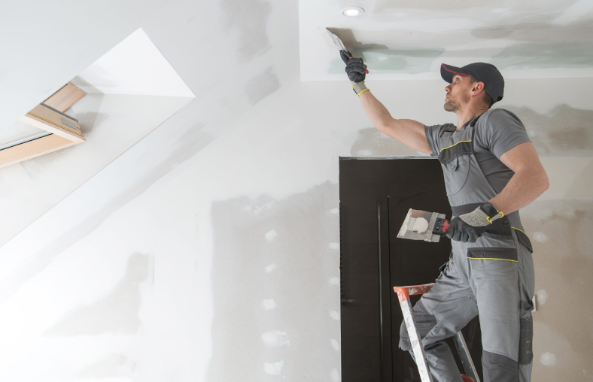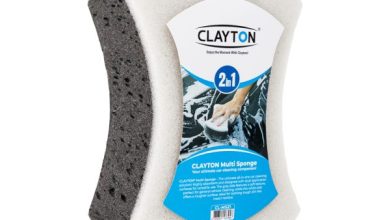Rebuilding Walls and Pipes: Essential Steps for Drywall Repair and Plumbing Restoration

Whether due to water damage, accidental impacts, or wear and tear, drywall repair and plumbing restoration are essential skills for homeowners and property managers alike. Addressing these issues not only maintains the aesthetic appeal of your space but also ensures structural integrity. This guide outlines the essential steps for successful drywall repair and plumbing restoration services.
Understanding the Importance of Drywall Repair
Drywall serves as the foundation of most interior walls. When it becomes damaged, it can lead to significant problems, including mold growth and structural instability. Timely drywall repair prevents these issues from escalating and preserves the value of your property.
Identifying Damage
Before any repair can begin, it’s crucial to assess the extent of the damage. Look for:
- Cracks and Holes: Small cracks may be repaired with simple patching, while larger holes often require more extensive work.
- Water Damage: Discoloration or bubbling usually indicates underlying water damage, necessitating both drywall repair and plumbing restoration.
- Mold Growth: If mold is present, it is vital to address moisture issues first to prevent recurrence.
Steps for Effective Drywall Repair
1. Gather Your Tools and Materials
To ensure a smooth repair process, gather the necessary tools and materials. Common items include:
- Drywall patches or sheets
- Joint compound
- Drywall tape
- Utility knife
- Sanding block or sponge
- Primer and paint
2. Prepare the Area
Before beginning repairs, clear the work area of furniture and other obstacles. Protect the surrounding area with drop cloths to catch dust and debris. If the damage is due to water, identify and fix the source of the leak before proceeding with drywall repair.
3. Cut Out Damaged Drywall
For larger holes, use a utility knife to carefully cut around the damaged area, creating a square or rectangle. Remove any loose debris and ensure the edges are smooth to facilitate a proper patch.
4. Install the Patch
For small holes, a patch can be applied directly over the damaged area. For larger repairs, cut a piece of drywall to fit the hole and secure it with screws. Ensure the patch is flush with the surrounding wall.
5. Apply Joint Compound
Once the patch is secure, apply a layer of joint compound over the seams and screw heads. Feather the edges to create a smooth transition to the existing wall. Allow the compound to dry completely, which may take several hours.
6. Sand and Finish
After the joint compound has dried, sand the area until smooth. Apply additional layers of compound as needed, sanding between each layer. Once satisfied with the finish, prime and paint the repaired area to match the surrounding wall.
Plumbing Restoration Services: A Crucial Companion
While drywall repair is vital, plumbing restoration services often go hand-in-hand, especially when water damage is involved. Addressing plumbing issues not only protects your home but also prevents future drywall problems.
1. Assess Plumbing Issues
Before starting drywall repair, investigate any plumbing issues that may have caused the damage. This could involve checking for leaks, assessing pipe conditions, or inspecting fittings. If you discover significant plumbing issues, it’s best to contact a professional plumbing service.
2. Fix the Problem
Once the plumbing issues are identified, repair them promptly. This may involve:
- Replacing damaged pipes
- Sealing leaks
- Upgrading old fixtures
Professional plumbing restoration services can provide comprehensive solutions, ensuring the problem is resolved effectively.
3. Coordinate with Drywall Repair
After plumbing repairs are complete, it’s time to return to drywall repair. Ensure the plumbing work is fully dry and secure before patching up the wall to avoid further issues.
Hiring Professionals for Comprehensive Restoration
While many homeowners may feel equipped to handle drywall repair and minor plumbing issues, more extensive damage often necessitates professional help. Restoration services can provide expertise, equipment, and the assurance that the job is done right. Professional services often offer:
- Experience: Trained professionals can quickly diagnose and address issues you may overlook.
- Quality Materials: Restoration services typically have access to high-quality materials, ensuring durability.
- Efficiency: Professionals can complete the work faster, minimizing disruptions to your daily life.
Conclusion
Rebuilding walls and pipes through effective drywall repair and plumbing restoration is essential for maintaining the health and appearance of your home. By understanding the steps involved and when to seek professional help, you can ensure a successful restoration process. Whether tackling minor repairs or dealing with significant water damage, taking proactive steps will safeguard your property for years to come.



